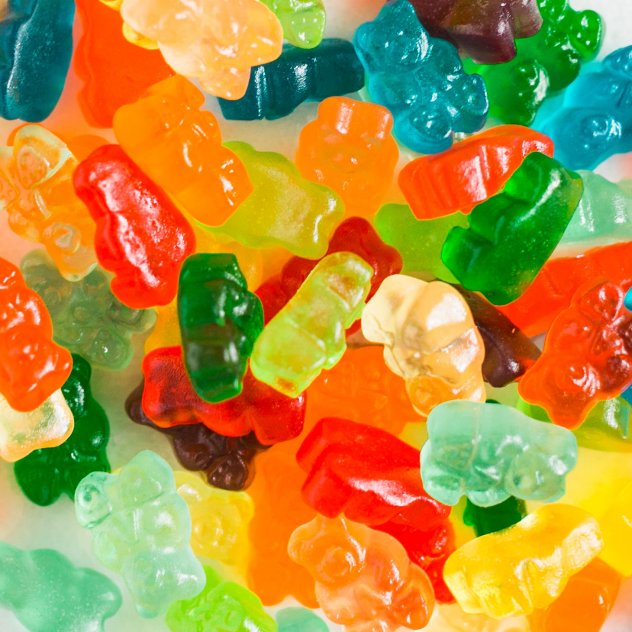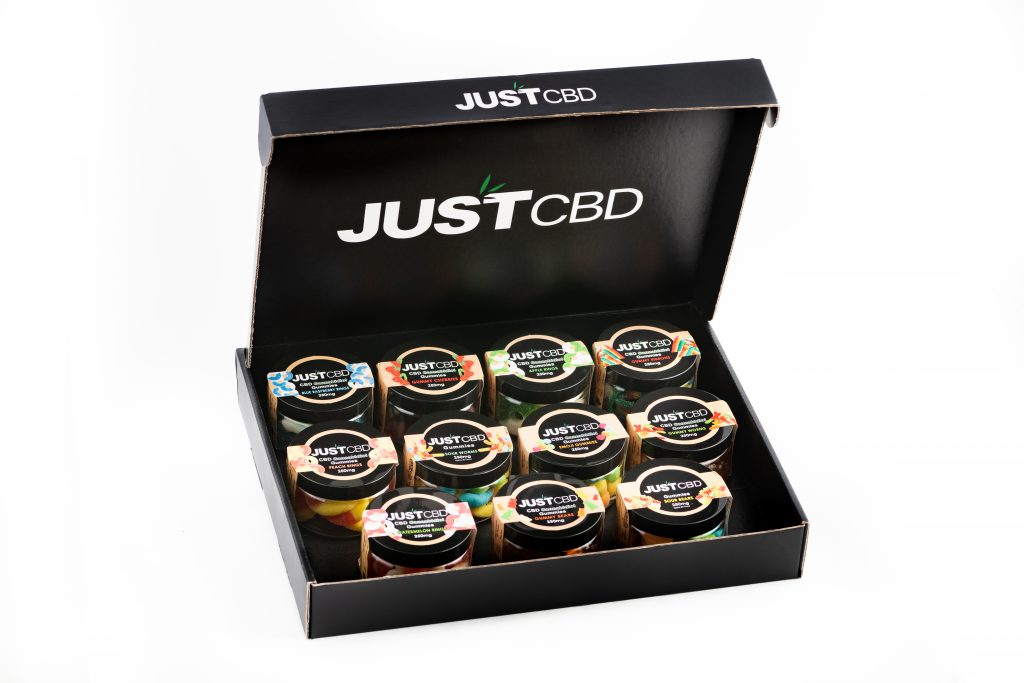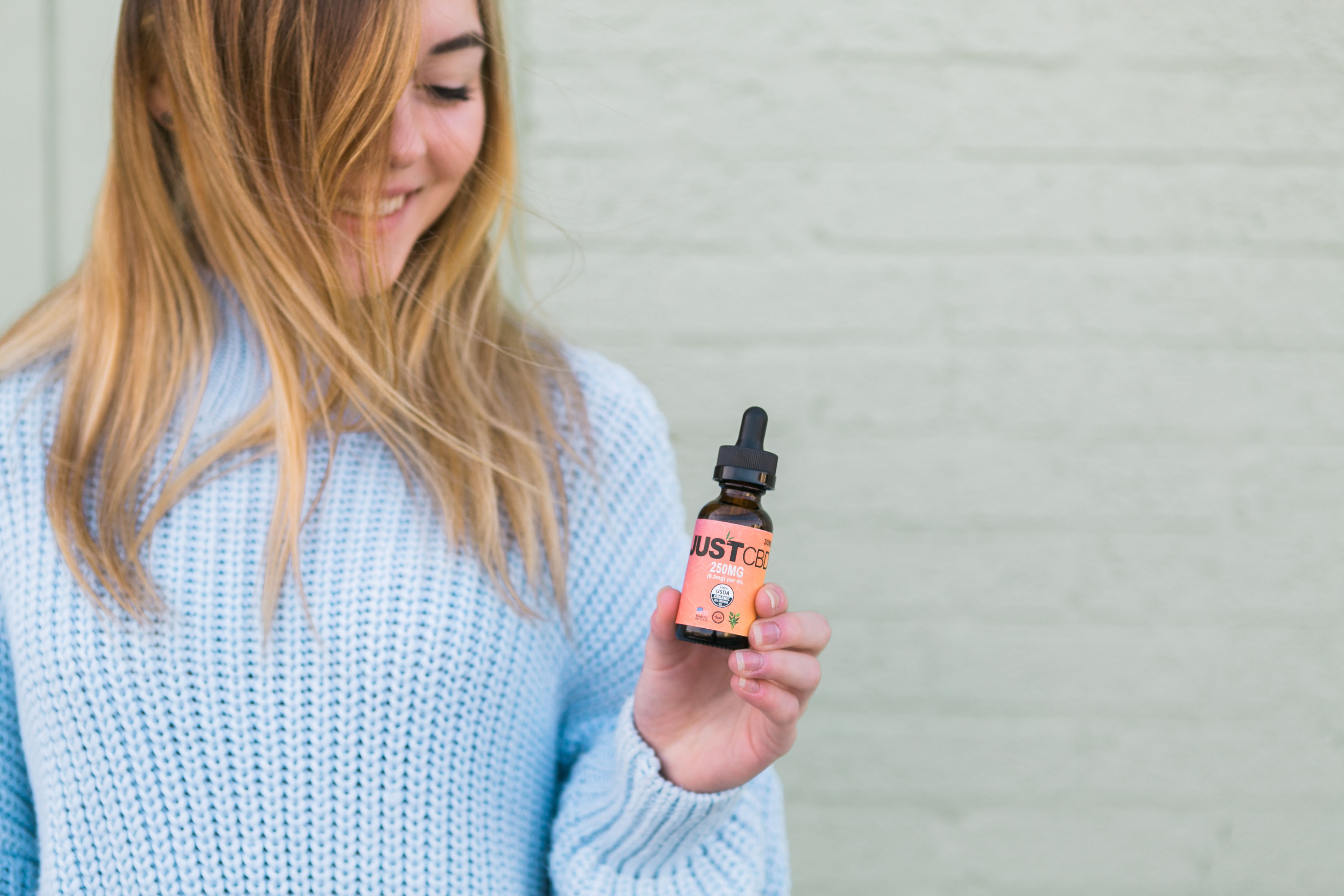Cbd Gummies Help With

#toc background: #f9f9f9;border: 1px solid #aaa;display: table;margin-bottom: 1em;padding: 1em;width: 350px; .toctitle font-weight: 700;text-align: center;
Content
- Provacan After Sun Balm 50mg Cbd 100ml
- Hempura Cbd Cream 500mg 1% 50ml
- Clean & Ethical Beauty Video Series
- The Cbd Skincare Co. Exfoliating Cleanser
- Amplifying Beauty, Simplifying Routines
- Populum Full-spectrum Hemp Cbd Oil
- Multifunctionals For Modern Product Protection
- Skin Fix Hand & Body Cream
- What About Cbd Cosmetics And Safety? Do They Have Fda Approval?
- Vertly Hemp Infused Lip Balm
Now, we’re starting to see indie beauty brands incorporate this hyped ingredient in cosmetics. At CanaBD, we’ve created a marketplace that holdsonlyhigh-quality, pure CBD hemp-primarily based cosmetics that meet strict manufacturing requirements and have efficiently passedthird-party laboratory testing. Feel free to flick through our number of beauty products under, as we offer numerous gels and creams, sun protective merchandise, lip balms and even bath salts.
There has been a push for years for Congress to change laws to give the FDA broader jurisdiction over cosmetics. The FDA has lengthy held that Hemp-CBD cannot be added to meals or dietary supplements due to the Drug Exclusion Rule. The FDA’s place is that the Food, Drug and Cosmetics Act (“FDCAâ€) and underlying FDA regulation don’t allow articles permitted as medication for use in food or dietary dietary supplements until they were marketed as such prior to public investigations into that drug.
This misleading advertising of unproven treatments additionally raises important public well being issues, as a result of patients and different consumers could also be influenced not to use approved therapies to treat critical and even fatal diseases. Dynamic Blending is a full service turnkey contract manufacturer specializing in skin care, hair care, oral care, cosmetics, private care, and extra. We also concentrate on green chemistry, or pure and organic products. Currently, CBD brands who want to be compliant are fighting the way to market it lawfully. There’s no concrete reply from the FDA yet, in addition to not adding the cannabinoid to food or making unsubstantiated claims.
Is firm, moisturized, elastic and radiant skin a part of your skin care objectives? And do you need to use only natural beauty merchandise to realize this objective? At L’fleur, we firmly imagine in the power of natural components corresponding to full spectrum CBD, Chaga mushroom, aloe, coconut oil, beeswax, lanolin oil, Olive Oil or Tea Tree important oil. Our company provides not only revolutionary anti-getting older CBD magnificence merchandise but additionally cosmetics that incorporate the Chaga mushroom – generally known as the strongest antioxidant on the earth.

The formula contains pure elements that are mild on the skin and respect the delicate nature of our body’s largest organ. Use this nourishing cream when your skin is in need of some moisturising goodness. This research identifies enhance in introduction of organic CBD cosmetic merchandise as one of many prime causes driving the CBD-infused cosmetics market development through the subsequent few years.

CBD was not an ingredient thought-about underneath the OTC drug evaluate. An unapproved new drug can’t be distributed or bought in interstate commerce. A. To date, the agency has not accredited a marketing application for hashish for the treatment of any disease or condition. FDA has, nonetheless, approved one hashish-derived and three hashish-related drug products.
It’s hyped for good causes, however you shouldn’t run out and exchange all of your skincare products with these containing CBD. CBD in cosmetics is unquestionably up-and-coming, as is the research. Until there may be ample proof of scientific studies utilizing CBD topically, we advise you utilize CBD in addition to other skincare products, not in place of them. As a supplement, CBD extracts and oils can work wonders for the body.
While beeswax is a a lot better supply for cosmetics than artificial ingredients, it’s additionally not vegan friendly. By leaving the wax as meals for the pollinators, Milk Makeup KUSH High Volume Mascara makes use of CBD oil to create excessive volume for the lashes.
So—and you may see where I’m going with this—that’s exactly what I did. For the sake of experimentation, I vowed to make use of solely beauty products made with either CBD or hemp for a strong week. A. We perceive that parents are looking for therapies for his or her youngsters’s medical circumstances. However, the use of untested medication can have unpredictable and unintended penalties. Caregivers and sufferers may be assured that FDA-approved medicine have been fastidiously evaluated for safety, efficacy, and quality, and are monitored by the FDA as soon as they’re on the market.
Provacan After Sun Balm 50mg Cbd 100ml

Over these next few years, you may be positive there will be an inflow of CBD merchandise hitting the well being and wonder market. As a matter of reality, the field is already getting fairly saturated. So, let’s take a look at the highest 10 CBD skincare and cosmetics merchandise. When purchasing for CBD cosmetics, you must look out for the class on the label as a result of it is an indicator of the purity of the extract used.
In any case, the overall authorized requirements for beauty products, together with those relating to safety are applicable. Under the FD&C Act, cosmetic merchandise and ingredients are not subject to premarket approval by FDA, besides for most color components. Certain cosmetic ingredients are prohibited or restricted by regulation, however currently that isn’t the case for any hashish or cannabis-derived elements. There are no other FDA-approved drug products that comprise CBD.
There are a number of creams, serums, and cleaners which have it as a cleaning and skin rejuvenating product, and their popularity is growing by the day. Indeed, a recent report by Market Watch indicates that the worldwide CBD cosmetics phase is worth around $580 million, while Grand View Research reckons that this market will grow to $1.7 billion by 2025. Pure CBD paste utilized on to the skin tends to be a greasy thing. These CBD cosmetics have been developed to ensure for immediate absorption of the cannabinoids, offering a much more pleasant expertise than topically utilized CBD paste.
Indie magnificence manufacturers have already began formulating products with this scorching new ingredient. From soaps to lotions, you can store varied CBD skincare products that promise to naturally heal, soothe ache, nourish pores and skin, fight inflammation, battle acne, and extra.
Hempura Cbd Cream 500mg 1% 50ml
The GRAS conclusions can apply to components for human food marketed by other firms, if they are manufactured in a method that is according to the notices and they meet the listed specifications. Products that comprise any of those hemp seed-derived elements must declare them by name on the ingredient listing.
Clean & Ethical Beauty Video Series

Ingredients which are derived from elements of the hashish plant that don’t comprise THC or CBD would possibly fall outside the scope of 301, and due to this fact may have the ability to be added to food. For instance, as discussed in Question #12, certain hemp seed components could be legally marketed in human meals. However, all meals ingredients must adjust to all relevant laws and regulations. Aside from the three hemp seed ingredients mentioned in Question #12, no different hashish or hashish-derived components have been the subject of a food additive petition, an evaluated GRAS notification, or have in any other case been accredited to be used in meals by FDA. Food corporations that wish to use cannabis or cannabis-derived components of their meals are topic to the relevant laws and regulations that govern all meals products, together with those who relate to the food additive and GRAS processes.
The Cbd Skincare Co. Exfoliating Cleanser

Other terms used to describe cannabidiol products embody “hemp extract†and “hemp CBD.†At the identical time, some distributors promote hashish or hemp seed oil, which isn’t the same as CBD. CBD comes from flowers and leaves, whereas the later is an extract of dry seeds. Further, CBD is gentle and flows easily, while seed oil may be very thick. Typically, healing oils have higher CBD content material than strange magnificence products.
If such products qualify as foods or food dietary supplements, only specific well being or vitamin claims authorised in the EU Register in accordance with Regulation No 1924/2006 may be made. Any CBD product taken for a medical purpose and associated with medical claims should be authorised as medicinal merchandise.
FDA has subsequently concluded that it’s a prohibited act to introduce or ship for introduction into interstate commerce any food to which THC or CBD has been added. FDA just isn’t conscious of any proof that would call into question these conclusions. Interested parties might present the company with any proof that they assume has bearing on this issue.
Fox Group holds the UK & German rights for South Korea’s primary dermal ï¬ller, REVOLAX. We also carry an array of skincare options like skin rejuvenation with plasma, LED mild facial masks and CBD cosmetics. Fox Group is also wholesaler of other progressive skincare brands. The 2018 Farm Bill loosened regulations on CBD by permitting the cultivation of business hemp (i.e. cannabis with less than 0.three % THC content material) and dropping hemp-derived products from the listing of Schedule 1 medication. As of now, the FDA has solely accredited one CBD-powered drug referred to as Epidiolex, used to treat seizures in youngsters with uncommon forms of epilepsy.
These permitted products are solely available with a prescription from a licensed healthcare provider. Our vary of CBD skincare products consists of every little thing you should effortlessly add it to your routine. We offer and promote only the highest high quality, market leading aesthetic and cosmetic merchandise on the most competitive prices possible.

Often such merchandise are offered on-line and are subsequently obtainable throughout the nation. Selling unapproved merchandise with unsubstantiated therapeutic claims just isn’t solely a violation of the legislation, but in addition can put sufferers at risk, as these products haven’t been confirmed to be secure or efficient.
Milk Makeup came out with a hemp-derived mascara and foreheadtint, aptly named Kush. Clean beauty locations together with Credo and Cap Beauty added pot-based mostly merchandise to their offerings, and entirely new skincare manufacturers based mostly across the ingredient have launched. The further down the weed rabbit hole I went, the more I realized I might simply substitute not solely my serum but all of my magnificence merchandise with their kush counterparts.
The 4 Best Memorial Day Recipes for #Veganshttps://t.co/MvS15tsxGI#Justcbd #vegan #cbd
— JustCBD (@JustCbd) May 13, 2020
Unlike food and drugs, cosmetics and ingredients in cosmetics usually are not topic to pre-market approval. For cosmetics, the FDA depends on consumer complaints to observe the business.
CBD has been investigated and permitted of as a drug and that is the basis for the FDA’s dedication. The FDA has also focused on prohibiting corporations from making any sort of well being claims about Hemp-CBD as such claims cause the FDA to categorise that product as a drug.
- Food corporations that want to use cannabis or hashish-derived components in their meals are subject to the related legal guidelines and rules that govern all meals products, together with those that relate to the food additive and GRAS processes.
- Ingredients that are derived from components of the hashish plant that don’t contain THC or CBD would possibly fall outside the scope of 301, and due to this fact would possibly be capable of be added to food.
- However, all meals ingredients must adjust to all applicable legal guidelines and laws.
- Aside from the three hemp seed elements mentioned in Question #12, no other hashish or cannabis-derived components have been the subject of a food additive petition, an evaluated GRAS notification, or have otherwise been permitted for use in food by FDA.
- For instance, as discussed in Question #12, sure hemp seed ingredients could be legally marketed in human meals.
- Is firm, moisturized, elastic and radiant pores and skin part of your skin care targets?
With the exception of Epidiolex, Marinol, and Syndros, no product containing cannabis or cannabis-derived compounds (either plant-based or artificial) has been permitted as secure and efficient to be used in any patient population, whether pediatric or adult. A. General details about the import/export of drug merchandise regulated by FDA can be discovered online here. Please see here for details about importing or exporting meals components. Ingredients which might be derived from components of the hashish plant that don’t include THC or CBD may fall outside the scope of this exclusion, and subsequently may be able to be marketed as dietary supplements. However, all products marketed as dietary supplements must comply with all relevant laws and regulations governing dietary complement products.
Sky is the Limit! Happy Monday Everyone!#JustCBD #CBD #Quotehttps://t.co/SSQDjhwo2f
— JustCBD (@JustCbd) July 27, 2020
After all, these merchandise are absorbed by your skin all day long. Here at Core CBD, we solely sell medical-grade, lab-tested CBD cosmetics that you should use with full confidence.
Amplifying Beauty, Simplifying Routines
Our CBD oil is sourced from hemp farms within the USA, and it’s grown with out insecticides or pesticides, and it never contains any psychoactive ingredients. CBD oil has so many functions that it’s only natural that it has discovered its way into the wonder and skincare industry.
The company has, nonetheless, accredited one hashish-derived and three hashish-associated drug products (see Question #2). FDA continues to be involved at the proliferation of merchandise asserting to include CBD which are marketed for therapeutic or medical makes use of though they haven’t been permitted by FDA.
Populum Full-spectrum Hemp Cbd Oil
It Ain’t No Hype. The Therapeutic Benefits Of CBD Is Real!
There Is No Better Time Than Now To Feel The Benefits From @JustCBD
-Pain Relief
-Anti Anxiety & Inflammatory
-Improve Circulatory System
-Alleviate Cancer Related Symptomshttps://t.co/A6OVD6zSf4
20% Off Code: GIO20 pic.twitter.com/qQmkBkR2j2— Michael Giovanni (@Giotraining) June 18, 2020
If you are not certain if CBD cosmetics are best for you, simply use our CanaBD Matchmaker to see which CBD product is best suited for you. CBD Skincare Company’s Shea Honey Oat Body Bar incorporates all-natural components such as sunflower oil and rosemary extract that can leave your pores and skin glowing.
Generally, the notification must embrace info demonstrating that a dietary complement containing the new dietary ingredient will moderately be anticipated to be secure underneath the situations of use beneficial or advised within the labeling. At the identical time, FDA recognizes the potential therapeutic opportunities that hashish or cannabis-derived compounds may supply and acknowledges the numerous curiosity in these potentialities. FDA continues to consider that the drug approval process represents the easiest way to help ensure that protected and efficient new medicines, together with any drugs derived from cannabis, are available to sufferers in need of appropriate medical remedy. The Center for Drug Evaluation and Research is dedicated to supporting the event of recent medicine, together with cannabis and cannabis-derived medication, through the investigational new drug and drug approval process (see Question #sixteen).
“Hemp seed oil also acts as an emollient to easy tough cells on the skin’s floor and offers moisturizing benefits,” he adds. When selecting your skincare products, you want to select properly. With so many brands together with chemical substances and hidden components in their merchandise, it can be difficult to resolve which to buy. CanaBD sells solely natural skincare products that do not comprise any added chemical compounds or parabens and that include a hundred% natural CBD. All of our products are appropriate for even the most sensitive skin types.
Luckily, that gives our favorite CBD skincare products plenty of leeway. CBD cosmetics are an all-pure alternative to today’s skincare merchandise that always include chemical substances and other disagreeable additives. CBD is known for its anti-inflammatory properties, and it’s generally used to deal with pimples, cut back wrinkles, and relieve dry pores and skin. If you’re on the hunt for a powerful skin remedy, buy CBD cosmetics at Core CBD at present.
Multifunctionals For Modern Product Protection
We are aware that some corporations are advertising CBD products to treat diseases or for different therapeutic makes use of , and we’ve issued several warning letters to such corporations. Under the FD&C Act, any product meant to have a therapeutic or medical use, and any product that’s meant to affect the structure or function of the body of humans or animals, is a drug. Drugs should typically both receive premarket approval by FDA by way of the New Drug Application process or conform to a “monograph” for a specific drug category, as established by FDA’s Over-the-Counter Drug Review.

Luckily, a cultural shift is coming to beauty and skincare merchandise. We’re talking a couple of product that celebrates our beauty for what it’s, quite than shaming us to cowl it up. In lower than four years, this industry is projected to hit upwards of $22 billion. CBD merchandise are secure to use skin relief cream 200mg on the skin even though their advantages could also be contested. Most dermatologists concede that magnificence merchandise containing cannabidiol don’t cause harm so long as you use them for topical functions only.
Therefore, it contains all the cannabinoids current in the cannabis plant, minus the THC. This will additional the entourage impact of all these ingredients, making the CBD Skincare Company Shea Honey Oat Body Bar a very hydrating expertise.
By comparison, Sweden solely allowed derivatives to return from the seed and subterranean parts of the hashish plant and THC ranges of zero.three% had been at present allowed in cosmetics and food supplements. Use of cannabidiol – an active compound present in several species of Cannabis sativa L. – in cosmetics is harmonised inside the European Cosmetic Regulation 1223/2009​, beneath entry 306 ‘Narcotics, natural and artificial’ of Annex II​, and has been for some time. The regulation prohibits use of hashish and hashish extracts in cosmetics, as they’re banned substances in Schedule I of the Single Convention on Narcotic Drugs​, signed in New York in 1961. Cibdol designed Soridol to hydrate the pores and skin and depart dry patches feeling refreshed and revitalised.
Under FDA’s rules (21 CFR 312.2), unless a scientific investigation meets the restricted criteria in that regulation, an IND is required for all medical investigations of products which might be topic to section 505 of the FD&C Act. To date, FDA has not approved a advertising software for cannabis for the therapy of any illness or situation and thus has not decided that hashish is safe and efficient for any specific illness or situation.
If CBD cosmetics’ authorized considerations are very urgent, search for products with lab reviews. These ought to give a precise list of the ingredients in addition to information on whether the CBD is hemp-extracted.
Skin Fix Hand & Body Cream
All cosmetic products are free from THC and contain solely natural components and CBD obtained from organically grown industrial hemp. So, in short, this means that CBD cosmetics are not lawfully required to have FDA approval until the product is advertised and used for medicinal purposes. The acquisition means of such is lengthy, arduous, and costly, so most producers do not give attention to medicinal CBD beauty and skincare merchandise. Their marketing could mention the compound’s healthful properties and a long listing of analysis-supported benefits, nonetheless.
If the mother or father or caregiver has an inexpensive suspicion that the kid by chance ingested products containing cannabis, the kid should be taken to a physician or emergency department cbd emoji special, especially if the child acts in an uncommon way or is/feels sick. However, based on obtainable evidence, FDA has concluded that none of those is the case for THC or CBD.
What About Cbd Cosmetics And Safety? Do They Have Fda Approval?
It’s worth noting that at L’fleur, we manufacture our products only in small batches and with naturally derived components – that way you possibly can ensure that all the ultimate cosmetics will be cruelty free, efficient and protected to your skin. We additionally made sure our magnificence products are Raw, non GMO, wild harvested, gluten free and haven’t any added preservatives. Be positive to go to our on-line shop where you can see a varied array of magnificence merchandise such as a firming evening balm, eye roll-on, soothing rub, skin fix or lip repair. We additionally made sure to incorporate some ache aid merchandise in our on-line shop – they contain CBD that helps to desensitize nerve fibers liable for the ache.
A. FDA is conscious of some hashish products being marketed as animal health products. We need to stress that FDA has not accredited hashish for any use in animals, and the agency can not guarantee the security or effectiveness of these merchandise. For these reasons, FDA cautions pet-homeowners towards using such products and recommends that you simply discuss along with your veterinarian about applicable therapy choices on your pet. A. With the exception of merchandise such because the hemp seed ingredients discussed in Question #12, which have been evaluated for safety, you will need to protect children from unintended ingestion of cannabis and cannabis-containing merchandise. FDA recommends that these products are saved out of reach of kids to cut back the danger of accidental ingestion.
While the results of CBD on inflammation, pimples, and other skin circumstances seem promising, there’s a lack of scientific research on CBD that involve topical utility. There isn’t robust enough broad spectrum cbd oil 750mg evidence that implies that CBD in serums, creams, and different cosmetics products will yield the identical outcomes as different types of CBD or other beauty ingredients.
With the introduction of CBD cosmetics into the beauty and skincare markets, we need to ensure the products aren’t only efficient but in addition non-toxic and safe. However, when compared to skin-care pillar ingredients like retinols and vitamin C, the research behind CBD’s efficacy in skin care continues to be comparatively in its infancy.
Our continuing review of data that has been submitted thus far has not triggered us to vary our conclusions. Based on available proof, FDA has concluded that THC and CBD products are excluded from the dietary complement muscle joint cbd hemp cream 500mg 1000mg definition underneath part 201 of the FD&C Act [21 U.S.C. § 321]. FDA considers a substance to be “approved for investigation as a new drug” if it is the topic of an Investigational New Drug software that has gone into effect.
CBD oil is likely one of the most common types of CBD merchandise now that medical cannabis is turning into legal in certain states. CBD oil may be taken orally or topically, like in skincare products. Essentially, use of naturally-derived CBD from cannabis vegetation is prohibited in the EU but use of hemp-derived or synthetically-produced CBD is allowed.
In circumstances the place consumers get opposed reactions, the irritation is brought on by one other ingredient that is unrelated to CBD. The company supplies hemp and cannabinoid materials to manufacturers throughout multiple sectors, together with cosmetics. It also operates as an OEM producer for companies that do not have the infrastructure to supply CBD products themselves. Swiss-British firm AP Organics is setting sights on Japan’s cosmetics marketplace for progress exterior of Europe, with the firm believing it holds nice prospects for its CBD components and providers. It would be particularly essential beauty companies ensured uncooked supplies and ultimate THC ranges were compliant, she said.
The CBD in our products is grown on non-GMO hemp farms within the US, EU and the UK and was extracted using low temperature, Co2 extraction. We additionally require all of our cosmetics to move third-get together testing by outside laboratories, so you can feel secure using our skincare merchandise. Before trying closely at FDA’s reply there, it’s essential to know how the FDA defines cosmetics. Cosmetics are “articles supposed to be rubbed poured, sprinkled or sprayed on . for cleansing, beautifying, promoting attractiveness, or altering look,†except for soap which is classed separately.
Law enforcement could be very unlikely to seek out CBD oil beauty product users, but private discretion is at all times advisable. I was aware the sweetness world had been hitting the cannabis craze hard for the previous few years, but till I started looking for a gateway serum of my very own, I didn’t know just how exhausting. This past 12 months it looks as if merchandise made with CBD and cannabis seed oil lit up out of nowhere.

Vertly Hemp Infused Lip Balm
However, the Single Convention’s banned ingredients list does not embrace cannabis seeds or leaves without tops, meaning use of CBD derived from these parts of the hashish plant is not presently prohibited. Also, be sure to store for cosmetics with no harsh chemicals and parabens in the different components. Search for these with a pure oil base and pure colorants. The status of meals containing CBD additionally determines the claims that could be made when they’re marketed.









